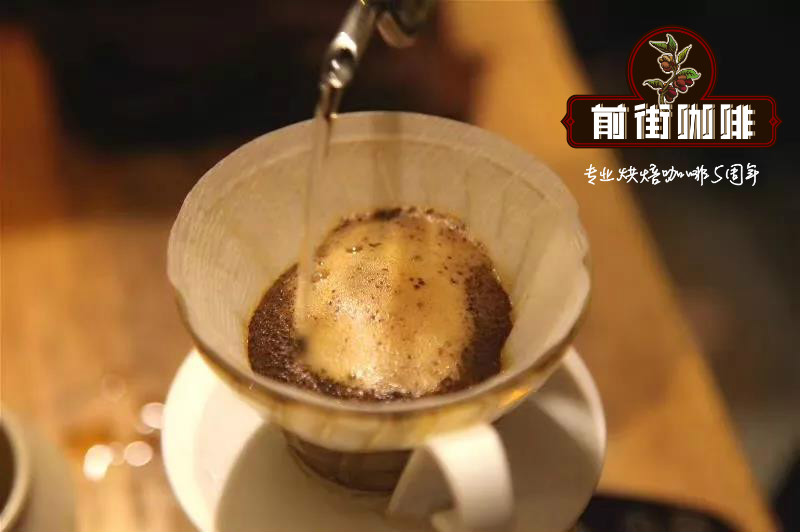What kind of coffee do you have?

The type of coffee
There are four kinds of coffee trees in the world, of which only two are of real commercial value and have been planted in large quantities. One is the Elaraby species (ARABICA), and the other is the Robasta species (KOBUSTA).
Different varieties of coffee beans have different flavors, but even the same varieties of coffee trees have their own unique flavors due to the influence of different soils and different climates.
Elaraby coffee trees are more difficult to grow. They like mild days and cooler nights. Too cold, too hot, and too humid climates can be fatal. Elaraby needs to plant coffee trees on sloping slopes at high elevations, so harvesting must be carried out manually, which is extremely difficult. However, because Elaraby coffee beans have excellent aroma, balanced taste, and relatively low caffeine content, although it is not easy to grow, they actually account for about 70% of the total coffee planted.
Robasta grows coffee trees that are resistant to high temperature, cold, moisture, drought and even mold. Its adaptability is extremely strong, it can grow very well on flat land, and harvesting does not necessarily need manual work, but can be carried out completely by vibrating machines. As far as planting is concerned, Robasta has many advantages in growing coffee trees, but it is a pity that the coffee beans produced are bad in aroma, bitter in taste, insufficient in acidity, and double the caffeine content of Elaraby. Robasta has more personality in the mouth of caffeine beans, which is mostly used for blending or instant coffee.
On the other hand, most of the Robasta coffee beans are small, of different shapes and sizes, and are not very good-looking. They are mainly produced in Uganda, Ivory Coast, Congo, say, Angola and other countries. Generally speaking, the coffee beans that everyone is most familiar with when drinking individual coffee in Taiwan cafes, such as the mountains of Brazil, Mantenin of Colombia, Yemenmoka, and the Blue Mountains of Jamaica, are all high-quality coffee beans grown by Elaraby.
Japanese charcoal roasted coffee: pure re-accompany has created the unique taste of Japanese charcoal roast. Xiangchun is bitter and astringent, and most of them maintain the original flavor of coffee.
Hawaiian coffee: with a strong sour taste and unique aroma, moderately roasted beans with a strong sour taste, deep-baked flavor please climb to a higher floor.
Bitter coffee: no sugar and no company, boiled coffee has a strong flavor, but the most bitter coffee, Blue Mountain Coffee: the origin of Jamaica, named in the Caribbean surrounded by the Blue Mountain sour, sweet, bitter taste are very harmonious and have excellent flavor and aroma, suitable for individual coffee, suitable for medium roasting.
Java coffee: Origin: Sumatra, Indonesia. It belongs to Arabica. After baking, the bitter taste is extremely strong and the aroma is very light, without sour taste.
Conna Coffee: Origin: coffee beans cultivated from lava in the Conna area of Hawaii, with a slight wine aroma and a very unique flavor.
Santos Coffee: mainly produces Brazilian Sao Paulo sweet, sour and bitter, with moderate sour taste, special taste and elegant taste.
Mocha Coffee: Origin: Ethiopia has a unique aroma, moderate roasting has a soft sour taste, deep roasting gives out a strong aroma, occasionally used as a blend.
Brazilian coffee: Origin: Brazilian sour and bitter taste can be mixed by baking, moderate roasting soft flavor, moderate taste, deep baking has a strong bitter taste, suitable for blending coffee.
Colombian coffee: Origin: Colombian unique sour and mellow taste. It is refreshing and alternating.
Manning Coffee: Origin: Sumatra, Indonesia. The smell is mellow, the acidity is moderate, the sweetness is rich and very intriguing, it is suitable for deep baking and exudes a strong aroma.
Mamba Coffee:
Mixed coffee Mantlin with Brazil, fragrant and delicious, strong and delicious, is the perfect match for coffee.
Salvadoran coffee:
Country of origin El Salvador
With sour, bitter, sweet and other taste characteristics, the best baking degree is moderate, deep.
Type of coffee:
Analysis of coffee
Etymology: Greek KAWEH
Meaning: strength and enthusiasm
Coffee beans: the nuts in the fruit of a coffee tree are baked in an appropriate way.
Coffee impression: Body
Aroma (Aroma)
Flavor (Flavor)
Guatemala Coffee: with excellent sour and sweet taste, it is the best material for mixed coffee and is suitable for deep roasting.
Kilimanjaro Coffee: sour, sweet, pure and fragrant, it will give off sweetness and light sour taste after moderate roasting, and soft bitterness after deep baking, which is suitable for blending.
Coppuccino: Italy's most famous fancy coffee, whirling, with cream, dried lemon, cinnamon, sweet and strong
Irish Coffee: Irish Whiskey, sugar cube or granulated sugar, pour in coffee and whipped cream after burning alcohol lamp. Fragrant, pure and strong
Zamag Blue Coffee: wine, hot coffee, dry lemon, cinnamon and sugar, sour, sweet, bitter coffee
Wicklana coffee: Swiss mocha, mocha with fresh milk and chocolate syrup, plus whipped cream and chocolate
American light coffee: hot coffee with water, light and refreshing MC coffee is such a style
Important Notice :
前街咖啡 FrontStreet Coffee has moved to new addredd:
FrontStreet Coffee Address: 315,Donghua East Road,GuangZhou
Tel:020 38364473
- Prev

How to taste the taste of a good fancy coffee?
Coffee is one of the three major drinks in the world, and it is also people's favorite drink in their spare time. Even if you don't like coffee, you have to understand these basic knowledge. No matter which coffee shop you go to, you can see some kinds of coffee, such as American style, mocha, Cabo, and so on, and the base for making these coffees comes from Espresso espresso, all of which are based on it.
- Next

How to keep coffee beans fresh? How to distinguish the freshness of coffee beans?
One is the coffee hoarded in the closet. Can you still drink it now? Here is a list of what happens after coffee roasting, and use information to help you solve the problem. The new coffee can hold up to three weeks. The new roasted coffee will hold its best flavor up to three weeks. Once the roasting is finished, the coffee beans will take several days to drain (dioxygen).
Related
- Beginners will see the "Coffee pull flower" guide!
- What is the difference between ice blog purified milk and ordinary milk coffee?
- Why is the Philippines the largest producer of crops in Liberia?
- For coffee extraction, should the fine powder be retained?
- How does extracted espresso fill pressed powder? How much strength does it take to press the powder?
- How to make jasmine cold extract coffee? Is the jasmine + latte good?
- Will this little toy really make the coffee taste better? How does Lily Drip affect coffee extraction?
- Will the action of slapping the filter cup also affect coffee extraction?
- What's the difference between powder-to-water ratio and powder-to-liquid ratio?
- What is the Ethiopian local species? What does it have to do with Heirloom native species?

